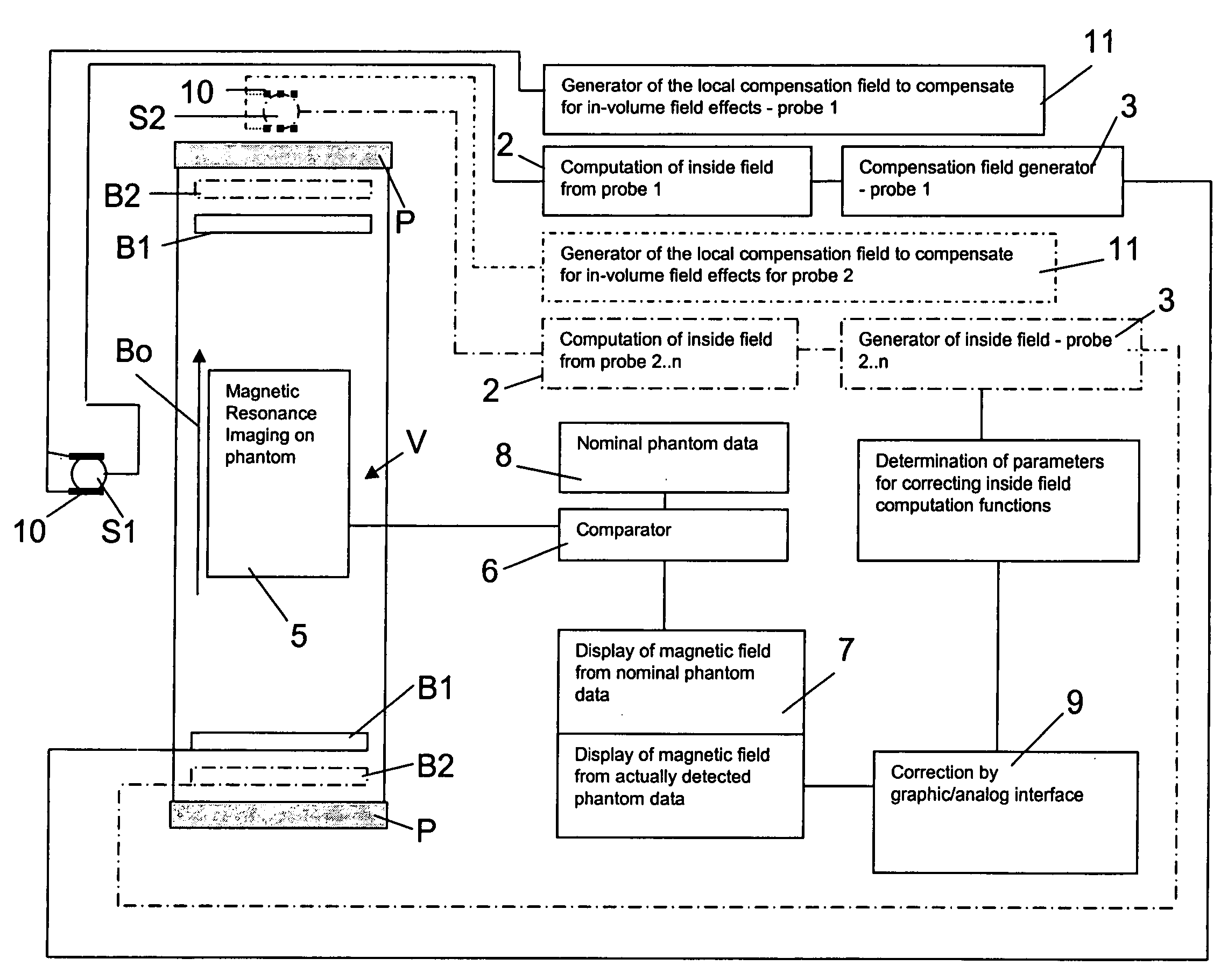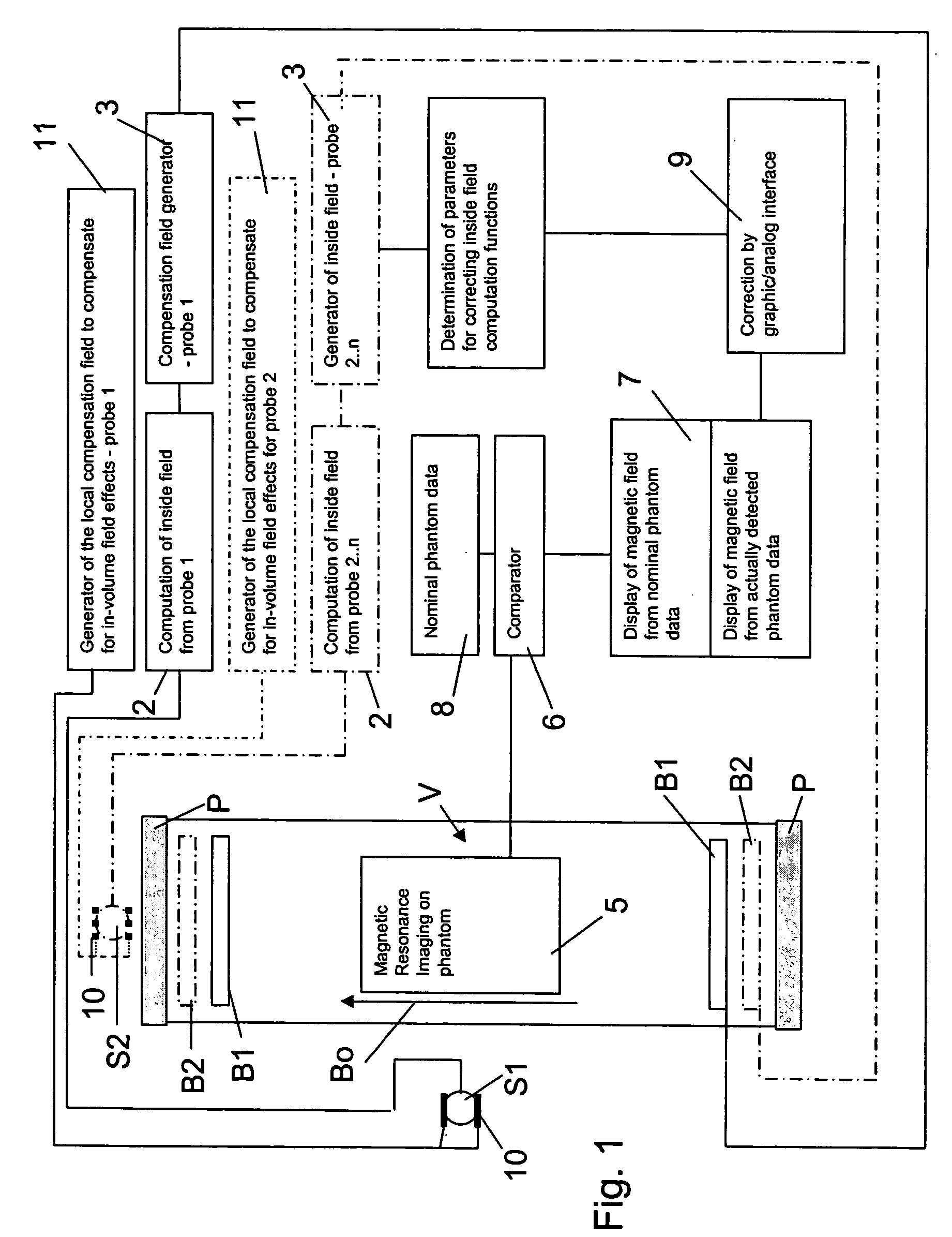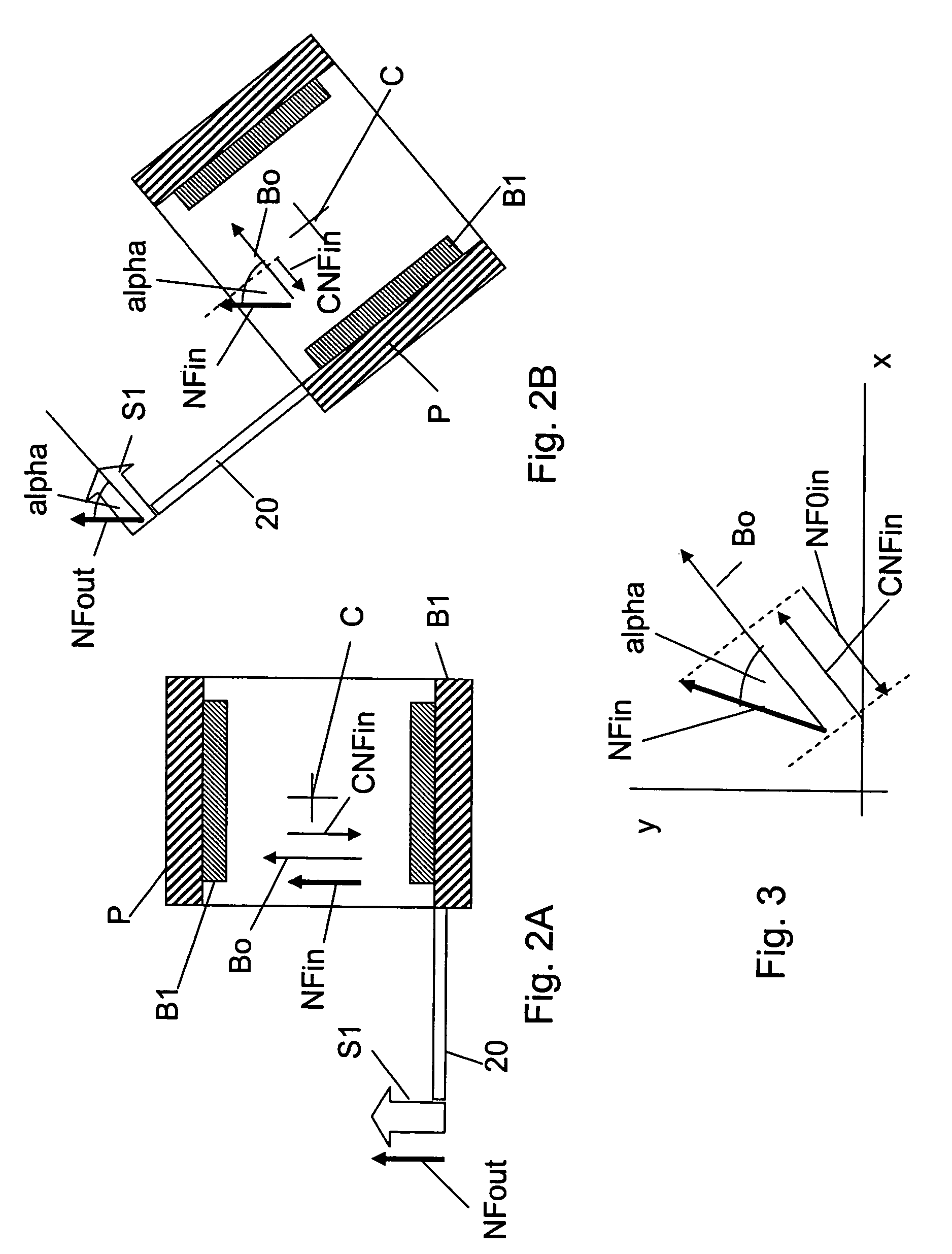Method and probe for compensating for magnetic noise fields in space volumes, particularly in magnetic resonance imaging apparatus
- Summary
- Abstract
- Description
- Claims
- Application Information
AI Technical Summary
Benefits of technology
Problems solved by technology
Method used
Image
Examples
Embodiment Construction
[0103] Referring to FIG. 1, a device for compensating for magnetic noise fields in a space volume V, like the imaging volume of the cavity for receiving the patient or a part of the patient body, of a Magnetic Resonance Imaging apparatus, has at least one probe S1 for measuring noise fields, which is placed outside the space volume V.
[0104] The probe S1 may be of any type, such as a small Hall probe or a small coil, or the like. The probe S1 is connected to a processing and compensation field generator unit, which includes a unit for computing or correlating the values of the noise field inside the space volume V on the basis of the noise field values detected by the probe S1 outside the space volume V. This unit performs the calculation and / or correlation operations by using theoretical or empirical functions, i.e., deriving from the laws of electromagnetism and / or from experiments.
[0105] The computation or correlation unit 2 may be a hardware unit which permanently incorporates ...
PUM
 Login to View More
Login to View More Abstract
Description
Claims
Application Information
 Login to View More
Login to View More - R&D
- Intellectual Property
- Life Sciences
- Materials
- Tech Scout
- Unparalleled Data Quality
- Higher Quality Content
- 60% Fewer Hallucinations
Browse by: Latest US Patents, China's latest patents, Technical Efficacy Thesaurus, Application Domain, Technology Topic, Popular Technical Reports.
© 2025 PatSnap. All rights reserved.Legal|Privacy policy|Modern Slavery Act Transparency Statement|Sitemap|About US| Contact US: help@patsnap.com



